U.S. Navy Combined Arms Virtual Environment (CAVE)
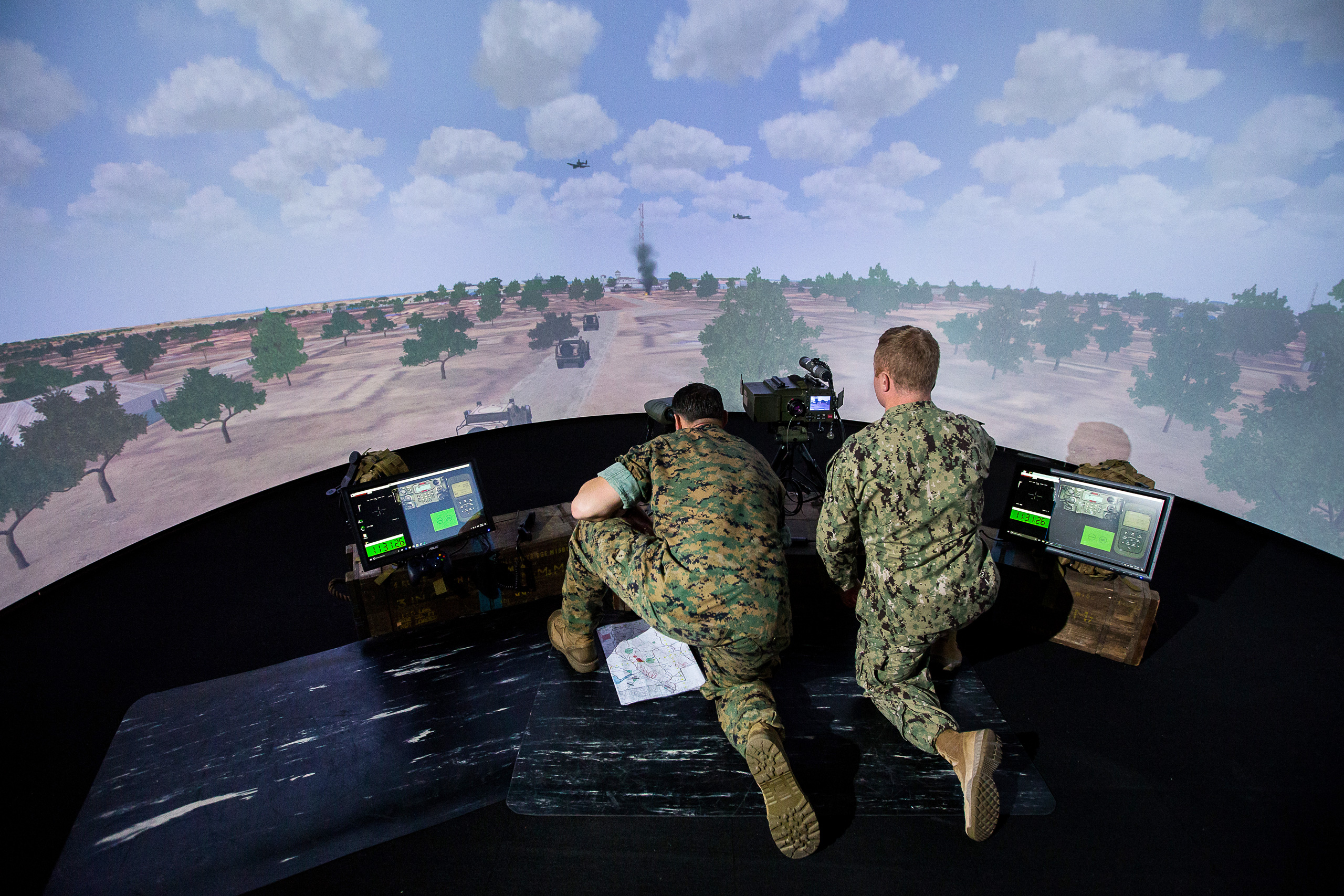
The CAVE system at EWTGPAC San Diego, with MVRsimulation visuals and 3D content, BSI MACE, and other products. Featured in the display is VRSG rendering MVRsimulation's geospecific terrain of Kismayo, Somalia.
The U.S. Navy uses MVRsimulation VRSG and 3D content in its Combined Arms Virtual Environment (CAVE) training dome and desktop systems at three US-based facilities that specialize in instructing Navy and U.S Marine Corps close air support procedures within a virtual environment.
The CAVE systems are used for initial qualification and currency training for Naval Special Warfare, Naval Expeditionary Combat Command, and Marine Corps joint terminal attack controllers (JTACS) and joint fires observers (JFOs). All three CAVE systems replaced legacy Multi-Purpose Supporting Arms Training (MSAT) systems, repurposing the 5-meter 240-degree field-of-view (FOV) domes from those systems.
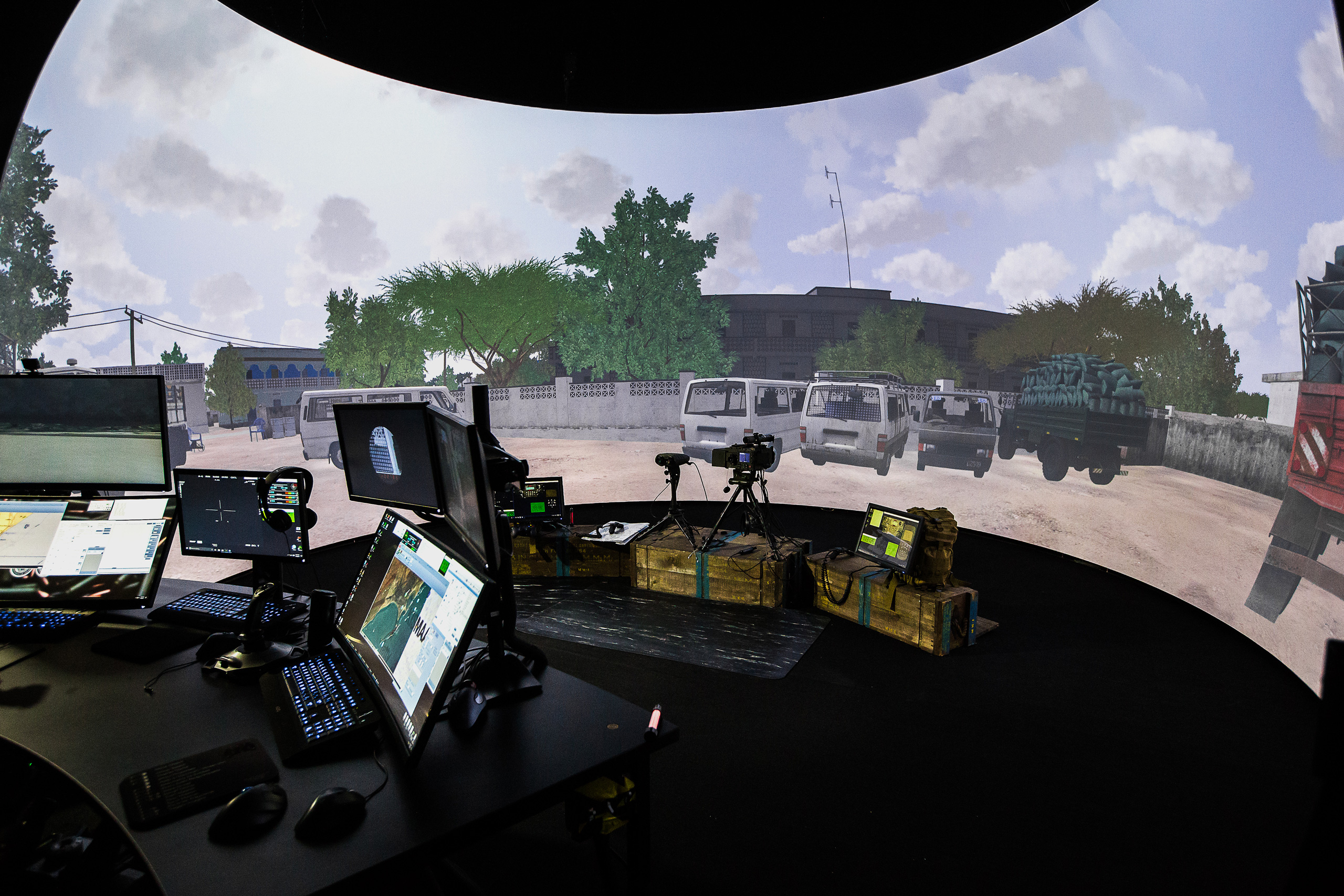
The CAVE system at EWTGPAC San Diego, with MVRsimulation visuals, terrain, and 3D content, and BSI MACE and other products. Featured in the curved display is VRSG rendering MVRsimulation's geospecific terrain of Kismayo, Somalia.
The CAVE training system, designed and built by Battlespace Simulations (BSI), provides an immersive, large field-of-view partial dome display for sea- and land-based individual and team training in supporting arms and close air support. The CAVE is comprised of student desktop stations in a partial dome, an instructor/operator station (IOS), a role-player station, and a supporting arms station in an adjoining classroom.
Ten VRSG channels are used in the CAVE to provide out-the-window (OTW) views for the partial dome, instructor station, and role player station, and the supporting arms station, as well as views for UAV camera feed and emulated military equipment (EME) devices. The CAVE also uses MVRsimulation's geospecific 3D terrain, and model libraries.
The system uses BSI's Modern Air Combat Environment (MACE) as the CGF/SAF, as well as other BSI software: Viper DIS radio for an operationally realistic communications environment, DIScord for after action review and debrief, OpenStreetMap server, combat radio interface, and several BSI-designed EME devices to include a portable lightweight designator/rangefinder (PLDR), Vector21 binocular laser rangefinder, and an IZLID infrared illuminator.
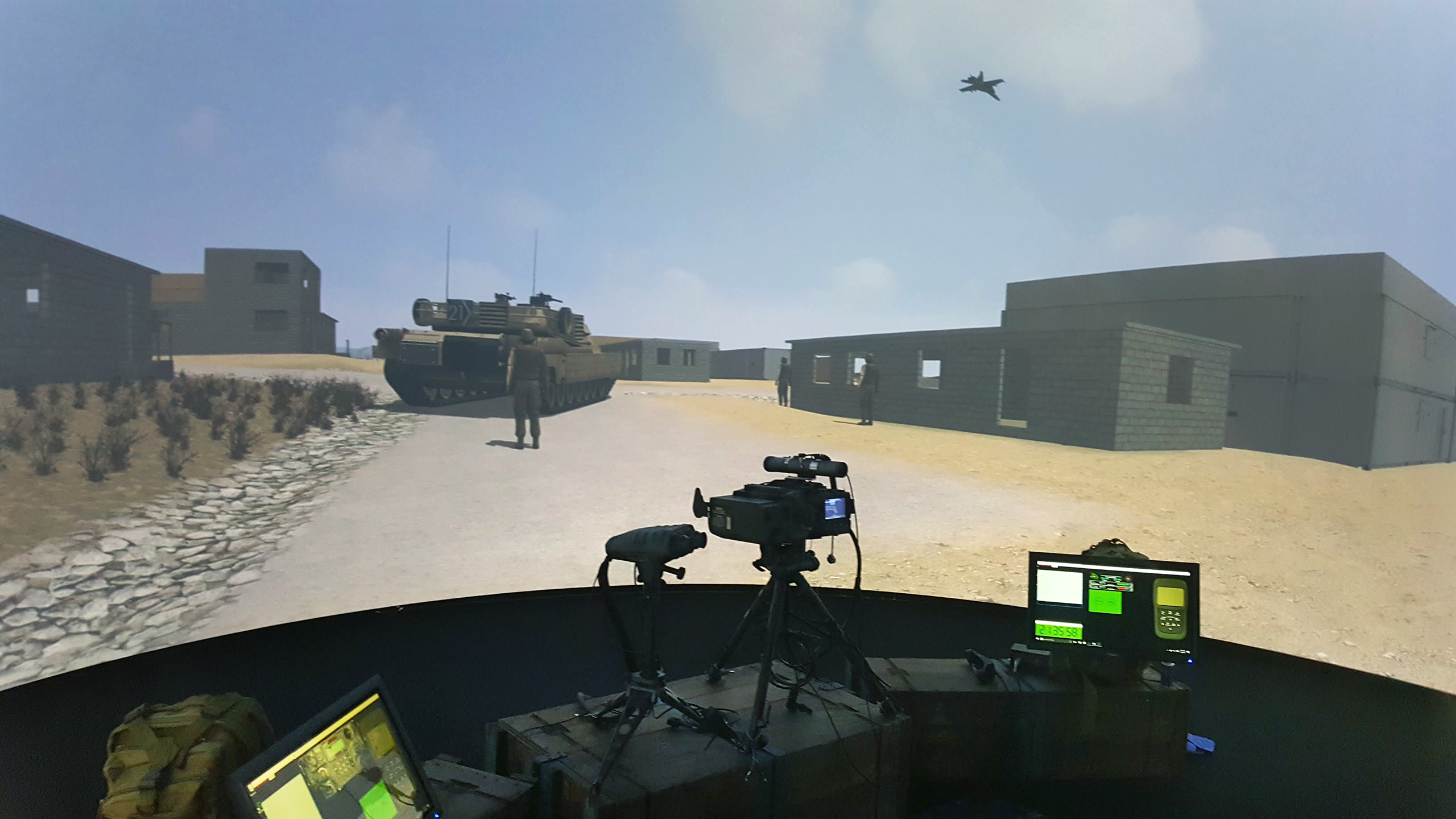
The CAVE system at EWTGPAC San Diego, with MVRsimulation visuals and 3D content, and BSI's MACE and EME devices. In the display VRSG is rendering MVRsimulation's geospecific terrain of the virtual Combat Town 25 MOUT site at Camp Pendleton. (Photo courtesy of EWTGPAC San Diego.)
BSI has installed the CAVE system at the Expeditionary Warfare Training Group Pacific (EWTGPAC) in San Diego, CA, using MVRsimulation’s real time rendering software and terrain, including virtual Camp Pendleton, CA, with modeled CT 25 and Kilo2 MOUT sites. BSI has also installed the CAVE system at the Expeditionary Warfare Training Group Atlantic (EWTGLANT) in Virginia Beach, VA, where the CAVE is used to train personnel responsible for coordinating air power, artillery, and naval surface fire support. The first U.S. Navy site to adopt the CAVE system was the Joint Close Air Support (JCAS) branch at the Naval Aviation Warfighting Development Center (NAWDC) at Naval Air Station (NAS) Fallon, NV.
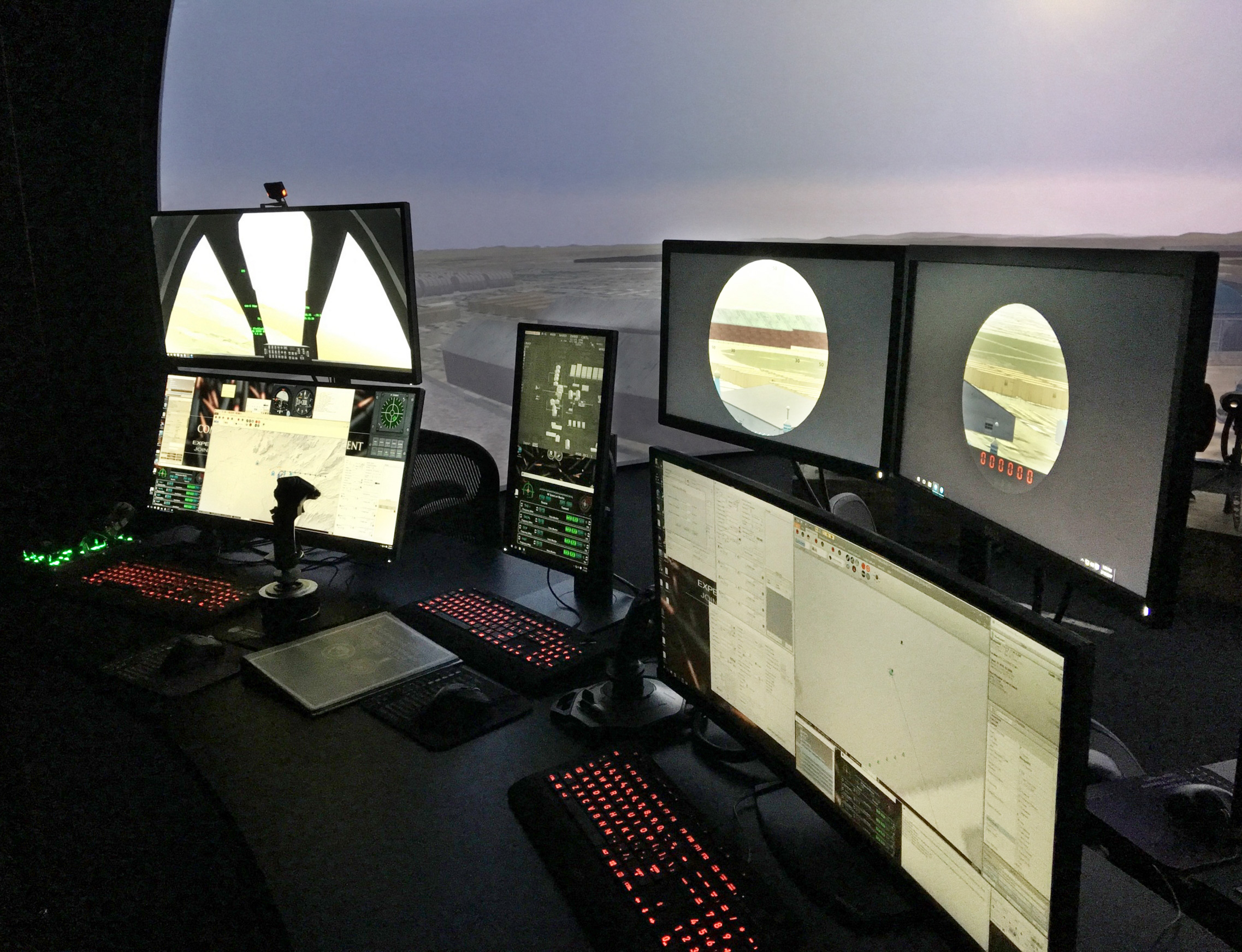
The CAVE instructor station at EWTGLANT Virginia Beach, with MVRsimulation visuals and 3D content, and BSI's MACE and other products. (Photo courtesy of BSI.)
The U.S. Navy’s CAVE system can participate in networked combined arms virtual exercises with both the U.S. National Guard and the U.S. Air Force as the two latter organizations have standardized on MACE and VRSG solutions for their close air support simulated training. Students at each facility train in the CAVE for a week, followed by two weeks of training on a live range. In the CAVE students are initially exposed to the tasks, techniques, and procedures they'll use on the range and they complete simulation-only Joint Mission Enabling Task List objectives of JTAC training.
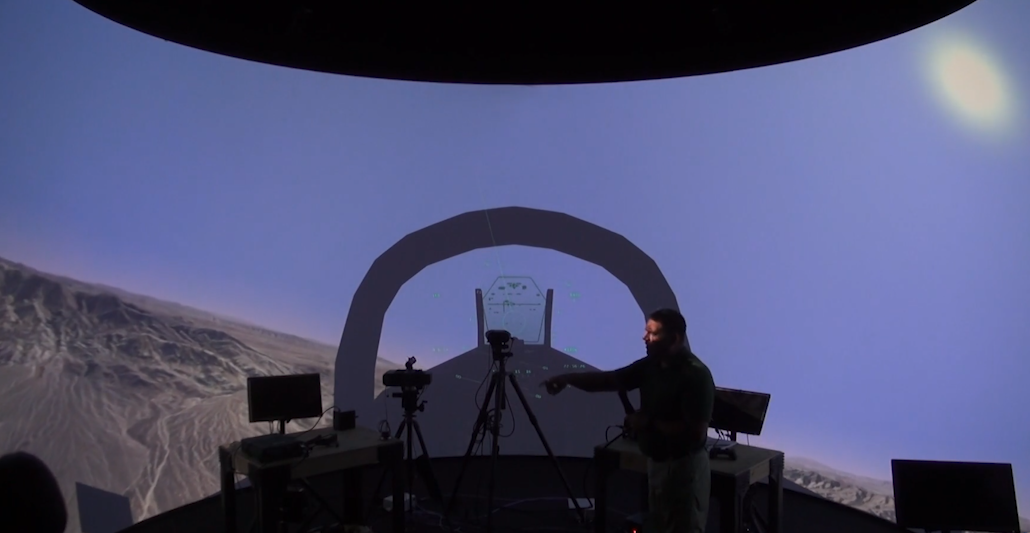
The CAVE system at NAS Fallon, with MVRsimulation visuals and 3D content, and BSI's MACE. (Photo courtesy of US Navy.)
